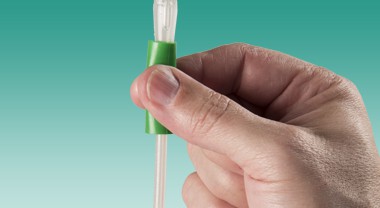How To Use A Catheter: Self-Catheterization For Beginners
When patients begin to use catheters they can sometimes feel embarrassed or nervous about self-catheterization. It is completely normal to feel this way, but it is important to note that self-cathing helps thousands of Americans every single day. People may need catheterization when they have certain medical conditions, such as neurogenic bladder, or after some surgeries. Intermittent catheters allow patients to live a more independent, high functioning life.
We are proud to help you start your self-catheterization journey. This guide is here to help you self-cath every step of the way and is designed for pediatric, male and female patients. Additionally, our catheter specialists at Patient Care Medical are trained to address all of your needs to find what supplies work best for you. Fill out our form today to request a free catheter sample!
Relax During Catheterization
It may be hard to insert a catheter if you are nervous and are clenching your muscles. Whenever you encounter resistance during insertion, try not to force the catheter further up your urethra. It is important to try to stay calm and breathe deeply before trying again.
It is also recommended that you use adequate lubrication to ensure that insertion is comfortable and painless. Single-use, easily transportable packets of lubrication are very popular, however you can use a tube as well, depending on your preference. Closed system and hydrophilic catheters can further increase comfortability.
We are happy to work with your insurance company to see which of our products are covered for you. We will also get the required documentation from your medical professional.
Straight tip catheters are sometimes difficult to insert, so some people use coudé (curved) tip catheters. Coudé tip catheters are commonly used by males, so they are often exclusively available in male sizes.
As always, we recommend talking to your doctor about your options to figure out which catheter works best for you.
Always Use A Sterile Catheter
There are a variety of risks associated with reusing catheters. Washing your catheter at home will be unable to protect you from pathogenic viruses, bacteria, or additional microorganisms that lead to a variety of infections. Many catheter wearers prefer to use disposable catheters to ensure that the catheter is sterile and safe to use. It is difficult and time consuming to wash and reuse catheters in addition to the safety risks, so we recommend using catheters designed for one-time use.
Be Aware of Common Warning Signs
There are many things that can make self-catheterization painful or difficult. It is important to talk to your doctor if you notice any of these underlying problems:
- Frequent urination
- 6-8 hours of urine absence on catheterization schedule
- Pain during insertion
- Blood in urine
- UTI symptoms, including pain/burning, fever, or increased urgency
Find The Right Catheter To Fit Your Needs
To other catheter companies, you are just a number, to Patient Care Medical, you are an individual with specialized needs. We understand that finding the right catheter to fit your individual needs is a process, which is why our US-based representatives are here to answer your questions 24/7. We will even provide you a variety of free samples to try out because at the end of the day our customers comfort and satisfaction is our top priority. Learn more about the different brands and styles of catheters we offer with your free samples today!


